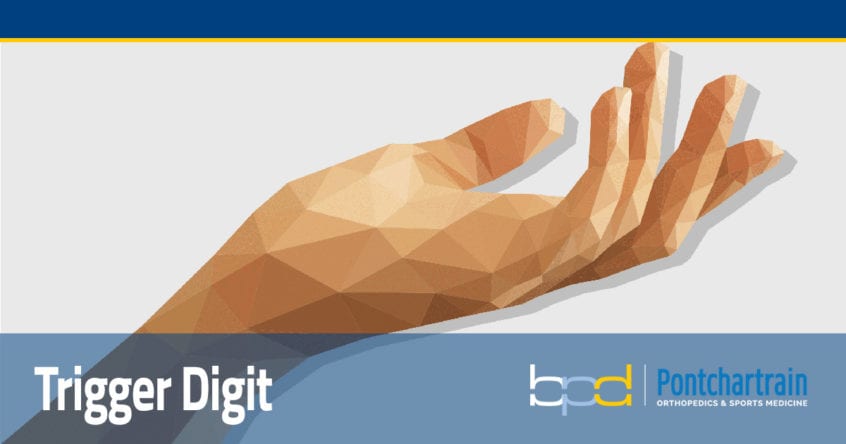What is Trigger Digit?
Stenosing tenosynovitis, otherwise known as trigger finger, trigger thumb, or trigger digit, is a painful, inflammatory condition which causes the digits of the hand to get stuck in a flexed position.
What Causes Trigger Finger & Trigger Thumb?
Trigger finger can develop as a result of an injury involving forceful or repetitive flexing of the finger, causing the swelling of the tendon connecting the palm and the fingers. This swelling prevents the tendon from passing through the fibrous tunnels (pulleys) of the joints, hampering movement. The narrowing of these fibrous tunnels may also prevent finger movement. While this condition may occur in any digit of the hand, it most commonly appears in the ring finger.
Who is at Risk for Stenosis Tenosynovitis?
It appears most commonly in women aged 40 to 60, however, it can develop in people of all ages. Those with a history of diabetes, gout, or rheumatoid arthritis are more at risk of developing trigger finger. People with jobs like farmers, industrial workers, musicians, or anyone else who conducts repetitive finger movement may have a higher risk of developing this condition. It’s not uncommon for those who have recently undergone surgery for carpal tunnel syndrome to develop trigger digit in the months following their operation.
How is Trigger Finger & Trigger Thumb Diagnosed?
To determine if a patient is suffering from trigger digit, Dr. Donnelly will conduct a physical examination. The finger may be swollen, tender, and stiff. A grating noise may occur when the affected finger is forced to move. The doctor may observe a lump at the base of the finger, a sign of a swollen tendon as a result of trigger finger. Lab diagnostics and x-ray imaging tests cannot detect the presence of this condition.
Treatment Options
Non Surgical
In mild cases of trigger digit, a physician may recommend:
-
- A combination of rest or modification of daily activities.
- A splint to reduce movement of the finger or thumb.
- Nonsteroidal anti-Inflammatory drugs (NSAIDS).
- Steroid injections: This is often the most effective option for the treatment of trigger finger. Patients with diabetes or rheumatoid arthritis may find these treatments less successful.
Surgical
In more severe cases, surgery may be required to release pressure placed on the fibrous tunnel of the finger as a result of the swelling of the tendon. This surgery is conducted under local anaesthesia and patients usually go home the same day. Physical therapy following surgery may also help restore movement to the affected fingers.
-
- Percutaneous release: The doctor will first numb the palm of the hand using local anaesthetic. They will then guide a needle to the affected tendon and release the pressure caused by inflammation. The physician may use ultrasound to guide the needle to the correct tendon. This procedure typically occurs in the doctor’s clinic.
- Tenolysis or trigger finger release surgery: In this procedure, the physician makes a small incision at the base of the finger, revealing the fibrous sheath and the inflamed tendon. This procedure usually takes place in an operating room.
Recovery Time
Recovery time will depend on the severity of the inflammation and the method with which it is treated. Most patients with trigger digit recover within a few weeks with the help of NSAIDs and rest. Those who undergo surgery can expect to recover within a few weeks, though stiffness may last for up to six months. If the patient experiences excess stiffness, the physician may recommend physical therapy to ease recovery.

